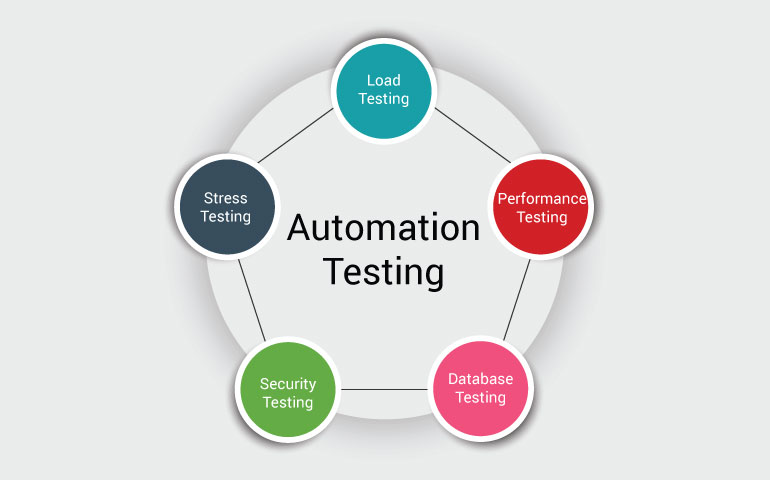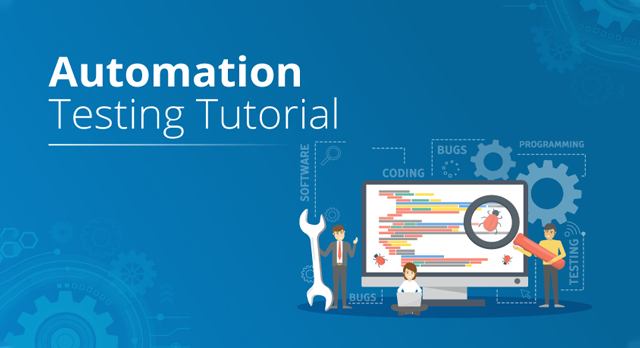Automation Testing: Trick Tips to Enhance Advancement Lifecycles
Automation Testing: Trick Tips to Enhance Advancement Lifecycles
Blog Article
From Manual to Automated Testing: A Comprehensive Overview to Transitioning Smoothly and Successfully
In the world of software program screening, the change from manual to automated processes has come to be an increasingly important change for companies seeking to enhance efficiency and accuracy in their screening techniques. As modern technology proceeds to development, the requirement for effective and smooth automated screening techniques has never been much more pressing. The journey from manual to automated screening is not without its obstacles, yet when come close to purposefully and with a clear strategy in mind, the advantages can be significant - automation testing. In this thorough overview, we will certainly discover vital actions and factors to consider essential for an effective change, from the first selection of devices to the combination of automation into existing process. Keep tuned to discover the understandings that will certainly aid pave the method for a smoother and extra efficient testing process.
Advantages of Automated Checking
Automated screening offers countless advantages, boosting performance and precision in software advancement processes. One key benefit is the significant decrease in testing time. Automated tests can be run concurrently on multiple gadgets and running systems, substantially accelerating the screening phase contrasted to hands-on screening. This boosted effectiveness enables faster feedback on the quality of the software program, making it possible for designers to identify and address concerns quickly.
Moreover, automated screening ensures a higher degree of accuracy in detecting flaws. Since automated tests comply with predefined manuscripts, human error is lessened, leading to more trustworthy test results. Uniformity in testing is also boosted, as automated examinations execute the very same steps specifically each time they are run. This consistency is vital in ensuring that all functionalities of the software are thoroughly examined, decreasing the possibility of undetected pests sliding with to production.
Picking the Right Devices
Firstly, examine your purposes and needs. Recognize the extent of your task, the technologies involved, and the capability of your group. This evaluation will help you determine the features and capabilities you call for in your screening devices.
Secondly, consider the compatibility of the devices with your existing systems and procedures. Seamless integration with your existing software program growth lifecycle is important to make certain a smooth change to automation.
In addition, examine the scalability and adaptability of the tools. As your testing requires advance, the tools ought to have the ability to adjust and fit changes effectively.
Last but not least, consider the support and community around the devices. Robust assistance and an energetic individual community can give beneficial resources and aid when applying automated testing. By meticulously taking into consideration these elements, you can select the right devices that align with your demands and established the phase for a successful transition to automated screening.
Creating Effective Examination Scripts

When crafting test manuscripts, it is vital to consider the certain requirements of the software program being tested and make sure that the scripts attend to all important performances. Detailed and clear calling conventions for test scripts and test instances can enhance readability and maintainability. In addition, incorporating error handling devices within the test manuscripts can aid in determining and resolving problems without delay.
Additionally, arranging examination scripts right into modular parts can enhance reusability and scalability, reducing redundancy and improving efficiency official statement in test manuscript upkeep. Regular evaluations and updates to examine scripts are vital to maintain pace with progressing software demands and capabilities. By following these principles, testers can develop reliable and robust test scripts that add significantly to the success of automated testing processes.
Integrating Automation Into Workflows
Effective integration of automation tools into existing process simplifies processes and enhances performance within software program growth cycles. When including automation into workflows, it is important to recognize repeated tasks that can be automated to save time and lower human mistake. By seamlessly integrating automated screening devices like Selenium or Appium right into the software program advancement lifecycle, groups can attain faster feedback on code changes, causing quicker pest detection and resolution. This combination enables continuous testing throughout the growth process, making sure that any problems are recognized at an early stage, leading to greater software application high quality. In addition, automation can be made use of to trigger tests automatically after each code commit, supplying instant recognition and maximizing testers to concentrate on more complex scenarios. Appropriate combination of automation devices needs partnership between advancement, testing, and procedures groups click for source to develop a unified process that optimizes efficiency and effectiveness in supplying high-quality software items.
Making Certain a Smooth Shift
Efficiently transitioning to automated screening involves meticulous preparation and careful implementation to minimize interruptions and make best use of performance in the software advancement procedure - automation testing. To ensure a smooth shift, it is necessary to start by performing a complete analysis of the current testing processes and determining locations where automation can bring one of the most significant benefits. Engaging with all stakeholders early in the procedure, consisting of developers, testers, and job managers, is important for gathering assistance and buy-in for the automation campaign
Interaction is crucial throughout this change stage. Clear interaction of the goals, benefits, and expectations of automated testing helps to take care of any kind of resistance or problems that might develop. Furthermore, offering sufficient training and resources for team participants to upskill in automation devices and methods is important for guaranteeing a successful change.

Verdict
Finally, transitioning from manual to automated testing provides many advantages, consisting of raised performance and reliability. By selecting the appropriate tools, writing efficient test scripts, and integrating automation review perfectly into process, organizations can make sure a successful and smooth shift. It is important to welcome automation as a beneficial property in software program screening processes to enhance overall quality and productivity.
In the realm of software program testing, the shift from manual to automated procedures has actually ended up being a progressively important transition for companies looking for to enhance efficiency and precision in their testing practices. Automated examinations can be run all at once on several devices and operating systems, drastically speeding up the screening phase compared to hand-operated screening. Consistency in testing is also boosted, as automated examinations carry out the exact same steps specifically each time they are run.To make sure the successful implementation of picked screening tools, the production of efficient test manuscripts plays an essential duty in verifying the functionality and performance of automated procedures - automation testing. By following these principles, testers can develop efficient and robust examination manuscripts that contribute substantially to the success of automated testing procedures
Report this page